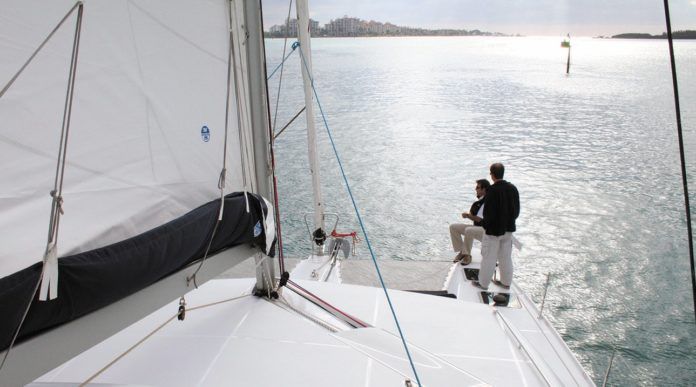The monohull versus multihull debate has been going on for decades, and for many PS readers, their minds are already well-settled on the subject. But with the rising popularity of cruising catamarans, and the development of some high-end performance cats (and some increasingly compelling marketing) its worth reviewing again the pros and cons of each approach.

Safety. Seamanship will be the determining factor in monohulls and multihulls, but the monohulls are generally more forgiving, especially when compared the higher-performance multihulls. The capsize of the professionally sailed Atlantic 57 Leopard featured in this months issue , would have been knockdown, perhaps a roll-over and dismasting in a poorly sailed displacement cruiser.
Dont buy the multihull sales pitch that monohulls are lead mines that will go straight to the bottom in a storm, while a multihull will scoot along merrily. As for the argument that cats are safer to move around in at sea because they don’t heel. This theory holds well on a reach or off the wind, but the motion when beating requires equal care. The rhythm of a monohull is often easier to take compared with the irregular corkscrew-motion of some multihulls.
Speed. Cruising multihulls are undeniably faster if the breeze is up and blowing from behind, but as this months article states: fully loaded cruising cats are often bogged down with gear that erases this advantage.
Fuel economy. Were sailing right? If you want to motor for miles up the intracoastal, or cruising an area plagued by light winds, then the cat owner will indeed pocket some extra savings.
Interior layout. Its hard to argue with the bright interior arrangements of a cruising catamaran, which provides a spacious room with a view, multiple patios-even parapets on some of the multi-tiered cats. But once you leave the large central living area, the hull quarters can be more cramped then those on a monohull.
Maneuvering. True, a full keel monohull can be a bear to back, and a cat can do with twin engines what most monohulls require a bow thruster to accomplish. However, try docking a catamaran in stiff crosswinds. The lack of resistance underwater make things a little more interesting.
Docking and anchoring. New marinas are making room for catamarans, but monohulls are easy to fit in most slips. Your savings in fuel money may well wind up going to the dockmaster. At anchor, multihulls are notorious for skittering about and requiring bridles to stay put. However, we have seen some top-heavy monohulls dance nearly as much.
Maintenance. Two hulls requires a little more maintenance, but both boats will keep its owner occupied. The real trick in some areas is finding a facility that will haul out a catamaran. In some parts of the world, careening at low tide is a way around this handicap.
Investment. Multihulls are a hotter commodity right now, and they depreciate at a lower rate. If a four-to-five year turnaround is part of your plan, then a multihull will ease your anxiety on the back end of your adventure. But then of course, youll pay more at the start.
Which one is best for you? Only you can answer your question. But before you commit to either, do your research. This is a sailing topic where many myths still persist.


































